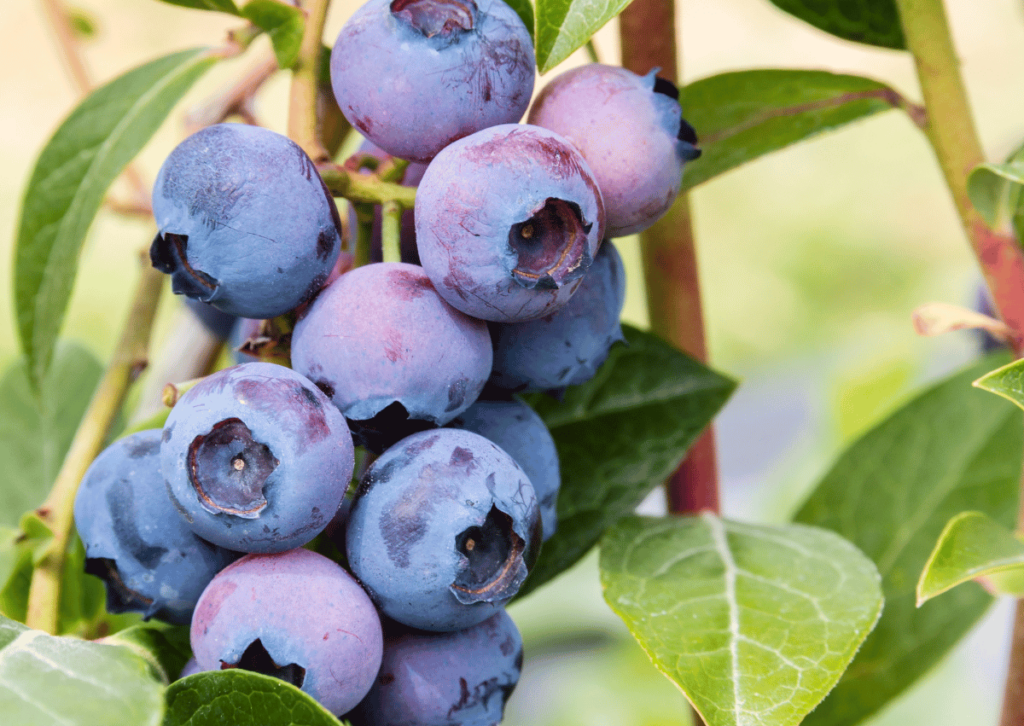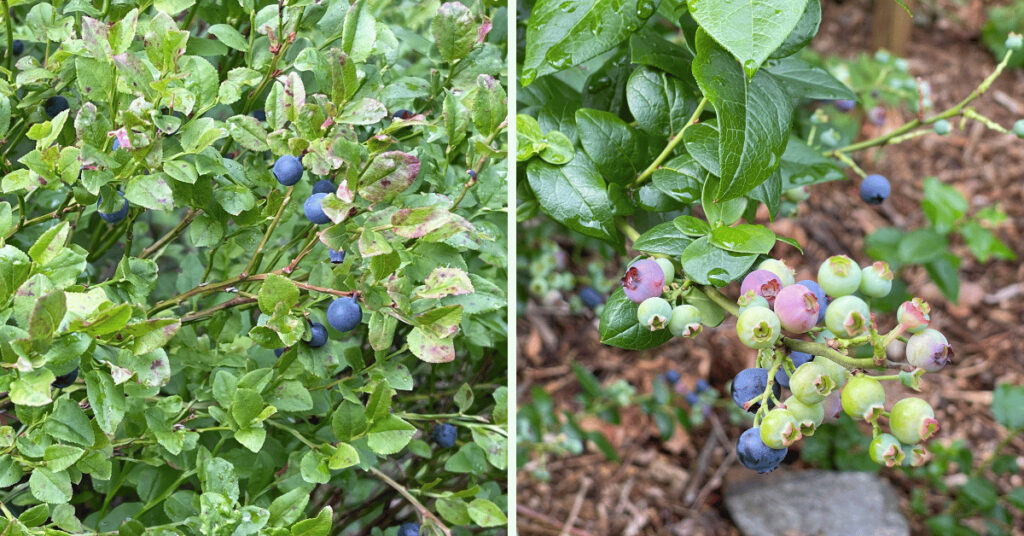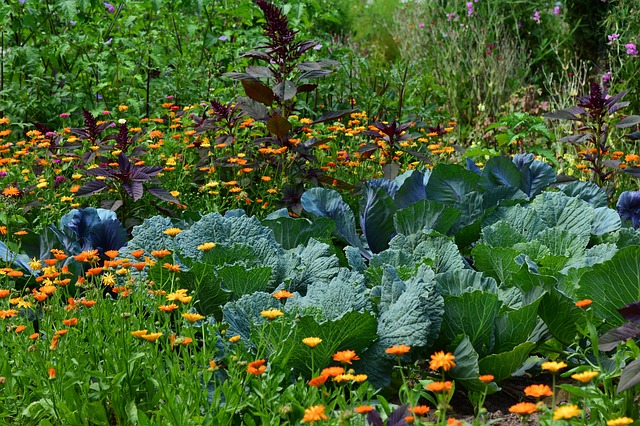Comparing American and European Blueberries: A Comprehensive Guide

The diversity within the plant kingdom is vast, with variations often seen even among species sharing a common name. A prime example of this is the blueberry, a fruit widely recognized and consumed globally. However, the blueberries found in different geographical regions, specifically America and Europe, exhibit distinct characteristics.
This article provides a comprehensive comparison between American and European blueberries. The focus will be on their respective differences in taste, appearance, growth habits, and harvesting methods. This information is particularly relevant for individuals residing in USDA Zone 7 and similar climates, including Scandinavia, where these berries are integral to local horticulture and culinary practices.
Understanding Blueberries: A Brief Overview
Blueberries: A Global Favorite
Blueberries, scientifically known as Vaccinium corymbosum (American) and Vaccinium myrtillus (European), are small, sweet fruits that have gained popularity worldwide. However, the term ‘blueberry’ can refer to different species depending on the geographical context. In Europe, ‘blueberries’ are often what are technically known as bilberries. These European blueberries, or bilberries, have a sweet taste with a hint of tartness and acidity, and they are softer compared to their American counterparts.
Despite both being referred to as ‘blueberries’, the European and American varieties belong to different sections within their classification. The European blueberry, or bilberry, belongs to the Myrtillus section, sharing this category with 11 other species. On the other hand, the American blueberry is classified under the Cyanococcus section.
The physical characteristics of these berries also differ. Bilberries bear a smooth, circular outline at the end opposite the stalk, while blueberries have persistent sepals at this end, creating a rough, star-shaped pattern of five flaps. Furthermore, bilberries typically grow singly or in pairs, unlike blueberries, which grow in clusters. Additionally, blueberries have more evergreen leaves.
In terms of growth habits, European blueberries grow on low, wiry shrubs that are part of the Ericaceae family. In contrast, American blueberries grow on bushes that can reach heights of up to 12 feet.
Despite these differences, both varieties are highly valued for their taste and nutritional benefits, making them a favorite among health-conscious individuals and culinary enthusiasts alike.
The Nutritional Powerhouse
Blueberries are not just delicious; they are also packed with essential nutrients. They are rich in vitamins C and K, fiber, and antioxidants, making them a favorite among health-conscious individuals. Their high antioxidant content, in particular, has been linked to numerous health benefits, including improved heart health and brain function.
Blueberries in Horticulture
In the field of horticulture, blueberries hold a significant place, and their importance extends beyond their delicious fruit. With their vibrant, bell-shaped flowers and the stunning autumn colors of their foliage, blueberry plants add aesthetic value to gardens and landscapes.
However, their role is not merely ornamental. Blueberry plants are a crucial part of the ecosystem, playing a vital role in supporting biodiversity. According to an article on the North Carolina State University’s Entomology Extension website, blueberry plants require pollination by insects to set fruit. The pollen in blueberries is heavy and sticky, and it cannot move on its own or be easily blown around by the wind. Therefore, the flowers of a blueberry plant must be pollinated by insects.
Numerous native bees, including bumble bees and solitary bees, are indigenous pollinators of blueberry plants in North America. In addition, honey bees are used extensively by growers to augment populations of native pollinators. As these insects visit blueberry flowers, pollen adheres to their bodies and is carried with them as they move from flower to flower, facilitating the pollination process. This interaction not only contributes to the production of the berries but also supports the survival and proliferation of these pollinator species, thereby playing a crucial role in maintaining biodiversity.
Culinary Uses of Blueberries
In the culinary world, blueberries are incredibly versatile. They can be eaten fresh or used in a variety of dishes, from salads and sauces to baked goods and desserts. Their sweet, slightly tart flavor profile enhances the taste of many recipes, making them a staple in kitchens around the world.
American Blueberries: An In-Depth Look
American blueberries, scientifically known as Vaccinium corymbosum, are a delightful treat to the senses. They are typically larger than their European counterparts, with a size that can range from a small pea to a marble. The berries have a smooth, round shape and a deep blue to purple-black color. The persistent sepals at the end opposite the stalk leave a rough, star-shaped pattern of five flaps, a characteristic feature of American blueberries.
Taste-wise, American blueberries are sweet with a slight tart undertone. The flesh inside is light green, juicy, and packed with tiny, soft seeds. The skin is thin but firm, providing a satisfying pop when bitten into. This combination of sweetness and tartness, along with their pleasing texture, makes American blueberries a favorite in various culinary applications, from fresh consumption to baking and preserves.
Growth Habits and Cultivation Practices
American blueberries are native to North America and grow on bushes that can reach up to 12 feet in height. These bushes are perennial, with glossy, dark-green leaves that turn to stunning shades of red, orange, and yellow in the fall. The plants are hardy and can withstand cold winters, making them suitable for cultivation in USDA hardiness zones 3 through 7.
Cultivating American blueberries requires specific soil conditions. They prefer well-draining, acidic soil with a pH between 4.5 and 5.5. The plants also benefit from a layer of organic mulch to conserve moisture, suppress weeds, and add organic matter to the soil.
Harvesting Methods and Seasonality
One unique feature of American blueberries is their staggered ripening season. Unlike European blueberries, which ripen all at once, the berries on an American blueberry bush ripen over a period of several weeks. This characteristic makes them particularly suitable for cultivation, as it allows for multiple harvests from a single plant.
The harvesting season for American blueberries typically falls in the summer, from June to August, depending on the local climate and the specific variety. Harvesting is often done by hand to prevent bruising the delicate berries. However, for large-scale commercial operations, mechanical harvesters may be used.
European Blueberries: An In-Depth Look
European blueberries, scientifically known as Vaccinium myrtillus and commonly referred to as bilberries, offer a unique sensory experience. They are generally smaller than American blueberries, and their color ranges from dark blue to almost black. The end opposite the stalk bears a smooth, circular outline, a distinctive trait of European blueberries.
In terms of taste, European blueberries are sweet with a slightly more distinct tart and acidic quality, making them a delightful addition to various dishes. The flesh inside is a deep red or purple, which can stain the mouth when eaten fresh. This color is due to the high anthocyanin content, a type of antioxidant that is also responsible for the berries’ health benefits.
Growth Habits and Wild Harvesting Practices in Scandinavia
European blueberries are native to the temperate and subarctic regions of the world, including Scandinavia. They grow on low, wiry shrubs that belong to the Ericaceae family. These shrubs are typically less than a foot high, making them significantly smaller than American blueberry bushes.
In Scandinavia, European blueberries are not typically cultivated but are instead harvested from the wild. The berries grow in a variety of habitats, including heaths, woodlands, and moorlands. They prefer acidic, well-draining soils and are often found in areas with a high rainfall.
Harvesting European blueberries is a popular summer activity in Scandinavia. The berries ripen all at once, usually in late summer, and are picked by hand. Wild harvesting not only provides a source of fresh, nutritious fruit but also offers an opportunity to connect with nature.
Differences in Plant Size and Area Requirements Compared to American Blueberries
Compared to American blueberries, European blueberries require a larger area for growth due to their low-growing habit. While American blueberries grow vertically on tall bushes, European blueberries spread out horizontally, covering the ground. This growth pattern means that a productive patch of European blueberries can take up a significant amount of space.
Despite these differences, both types of blueberries are cherished for their unique characteristics and contributions to culinary and health practices. Whether you’re enjoying the sweet-tart flavor of a European blueberry or the juicy burst of an American blueberry, you’re partaking in a global tradition of blueberry appreciation.
Comparative Analysis: American vs European Blueberries
Side-by-Side Comparison: A Tale of Two Berries
When comparing American (Vaccinium corymbosum) and European blueberries (Vaccinium myrtillus), several differences and similarities come to light.
In terms of appearance, American blueberries are larger, with a deep blue to purple-black color and a star-shaped pattern at the end opposite the stalk. European blueberries, on the other hand, are smaller, darker, and have a smooth, circular outline at the same end.
As for taste, both varieties are sweet, but European blueberries have a slightly more distinct tart and acidic quality. The flesh of American blueberries is light green, while European blueberries have deep red or purple flesh.
When it comes to growth habits, American blueberries grow on tall bushes that can reach up to 12 feet, while European blueberries grow on low, wiry shrubs. American blueberries also have more evergreen leaves compared to European blueberries.
Harvesting practices differ as well. American blueberries ripen over a period of several weeks, allowing for multiple harvests, while European blueberries ripen all at once. In Scandinavia, European blueberries are typically harvested from the wild rather than cultivated.
Contrasting the Ripening Stages: European and American Blueberries in their Natural Habitats

Right: A side-by-side comparison of European and American blueberries, both still on their respective bushes in a home garden. Notice the range of colors on the American blueberry bush, from green to ripe blue, illustrating the staggered ripening process unique to this species.
Suitability for Different Climates: A Focus on USDA Zone 7
American blueberries are hardy plants that can withstand cold winters, making them suitable for cultivation in USDA hardiness zones 3 through 7. They require well-draining, acidic soil and benefit from a layer of organic mulch. Their staggered ripening season and vertical growth habit make them a good choice for cultivation, even in smaller spaces.
European blueberries, on the other hand, are native to the temperate and subarctic regions of the world, including Scandinavia. They thrive in acidic, well-draining soils in areas with high rainfall. Given their low-growing habit and the fact that they ripen all at once, European blueberries require a larger area for growth and are typically harvested from the wild rather than cultivated.
In USDA Zone 7 and similar climates, both types of blueberries can potentially be grown. However, the choice between American and European blueberries will depend on the specific conditions and constraints of the location, as well as the preferences of the gardener.
Implications for Gardeners, Small-Scale Farmers, and Homeowners
The differences between American and European blueberries can significantly influence their cultivation and use. For instance, the larger size and staggered ripening of American blueberries make them an excellent choice for gardeners and small-scale farmers who wish to have a continuous supply of fresh berries throughout the summer. Their taller bushes are also easier to harvest from, reducing the need for bending or crouching.
On the other hand, European blueberries, with their unique taste and lower growth habit, offer a different set of advantages. Their suitability for wild harvesting can provide an enriching outdoor activity for homeowners and nature enthusiasts. Furthermore, their distinct tart flavor can add a unique touch to various culinary creations.
Cultivation Tips: Harnessing the Unique Characteristics of Each Type
For successful cultivation of American blueberries, consider the following tips:
- Choose a sunny location with well-draining, acidic soil.
- Apply a layer of organic mulch to conserve moisture and suppress weeds.
- Prune the bushes in late winter or early spring to encourage the growth of strong, productive branches.
- Monitor the bushes regularly for pests and diseases.
For European blueberries, consider these practices:
- If cultivating, choose a location that mimics their natural habitat – acidic soil in a high-rainfall area.
- Allow plenty of space for the low-growing shrubs to spread.
- If harvesting from the wild, ensure to follow sustainable practices, such as not overharvesting from a single area and avoiding damage to the surrounding vegetation.
Whether you’re considering cultivating American blueberries, European blueberries, or both, gaining an understanding of their unique characteristics and needs is a crucial step in your blueberry-growing journey.
Conclusion
In this comprehensive guide, we’ve delved into the fascinating world of American and European blueberries, exploring their unique characteristics, growth habits, and the implications of these differences for gardeners, small-scale farmers, and homeowners.
We’ve learned that American blueberries, or Vaccinium corymbosum, are larger berries that grow on tall bushes and have a staggered ripening season. This makes them particularly suitable for cultivation, as it allows for multiple harvests from a single plant. Their sweet flavor with a slight tart undertone makes them a versatile addition to various culinary applications.
On the other hand, European blueberries, also known as bilberries or Vaccinium myrtillus, are smaller, darker berries that grow on low, wiry shrubs. They are typically harvested from the wild in Scandinavia and offer a unique sweet yet tart flavor. Their growth habits require a larger area for growth, making them a different, yet equally rewarding, gardening endeavor.
Whether you’re a gardener, a small-scale farmer, or a homeowner, both American and European blueberries offer unique opportunities and challenges. By understanding their differences and unique characteristics, you can make informed decisions about which type to cultivate or seek out for your culinary creations.
We encourage you to explore and appreciate the unique characteristics of both types of blueberries in your gardening and culinary endeavors. Each offers its own set of rewards, from the joy of harvesting your own berries to the satisfaction of creating delicious dishes with them. Happy gardening and bon appétit!
Enhance Your Garden’s Diversity
Enjoyed learning about blueberries? Expand your gardening knowledge and discover which herbs could make a great addition to your garden. Visit our post on “Which Herbs to Plant in Hugelkultur Beds” and start planning your next planting season today!
Further Your Understanding of Scandinavian Fruits and Berries
If you found our deep dive into the differences between American and European blueberries enlightening, you won’t want to miss our Top 10 Berries and Fruits for Scandinavian Gardens: A Comprehensive Guide.
This guide is an invaluable resource for anyone interested in the diverse world of fruits and berries that can thrive in Scandinavian gardens.
Why You Should Explore the Comprehensive Guide:
- Global Context: Gain a broader perspective on how Scandinavian fruits and berries compare to those from other regions, much like you did with American and European blueberries.
- Sustainability and Biodiversity: Learn about fruits and berries that contribute to a sustainable garden and support local biodiversity.
- Cultivation and Harvesting: Acquire tips and techniques for cultivating a variety of fruits and berries, expanding upon the detailed practices discussed for blueberries.




